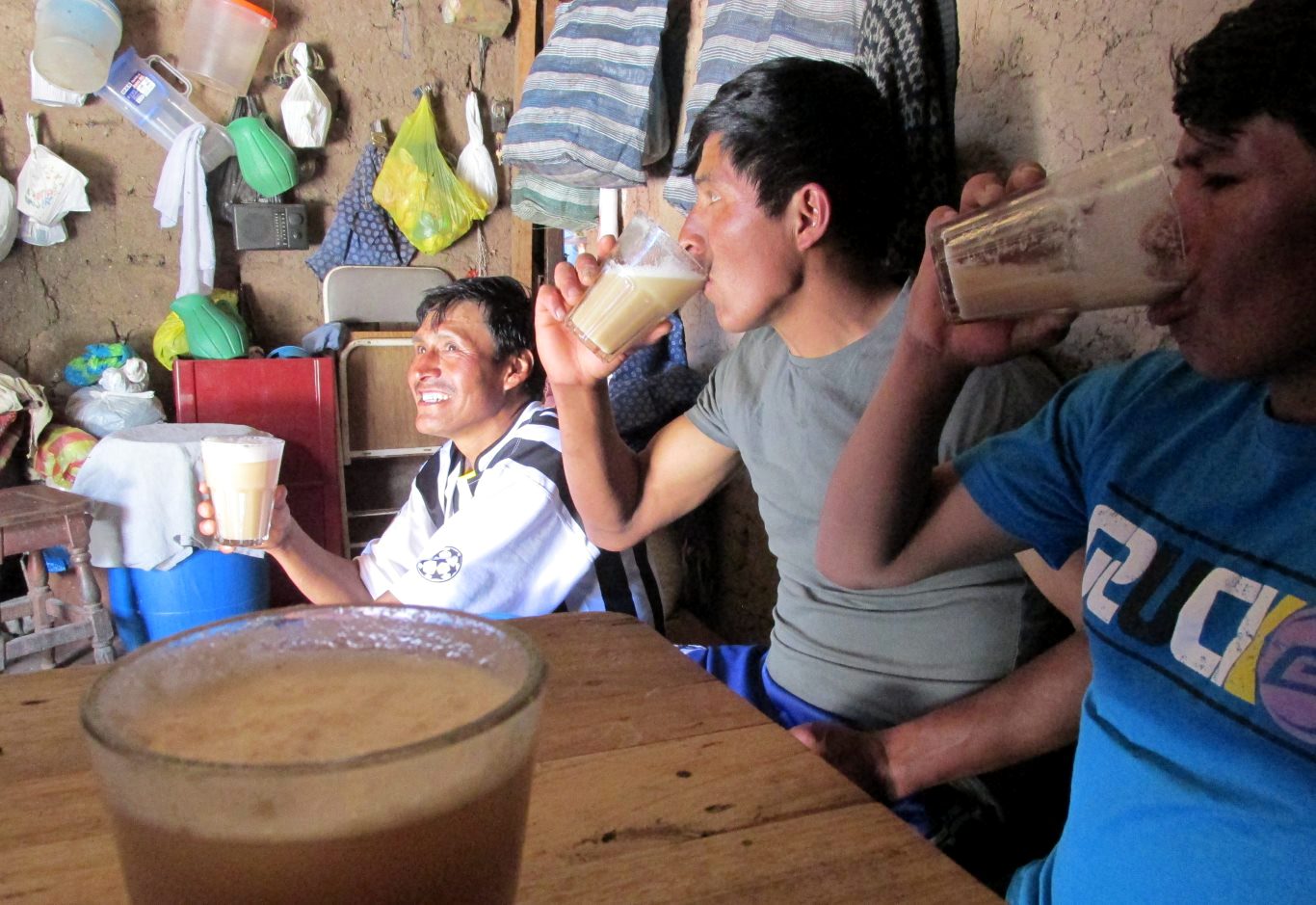
These guys were my porters on the Huchuy Qosqo trek to Machu Picchu. We had a few glasses of chicha when we arrived in Lamay. The youngest porter looked just about old enough to drink legally in Peru. Photo by Tony Dunnell.
The legal drinking age in Peru is 18, which is fairly standard on a global level. About 60% of all countries have a drinking age of 18. Some, like Cuba, Burundi and Antigua, are more lenient and have an on-premise drinking age of 16. A handful of nations are more puritanical and have a legal drinking age of 21 — most notably the United States.
So if you’re a youthful America with a penchant for alcoholic beverages, you can breathe a sigh of relief when you arrive in Peru. For most other nationalities, the legal drinking age in Peru is nothing out of the ordinary.
Laws, of course, are sometimes no more weighty than the paper they’re written on. In Peru, Article 14 of Law 28681 clearly states that selling or supplying alcohol to anyone under 18 is illegal.
But, well, no one’s looking, right? At least, not all the time.
Drinking Laws in Bars and Discos in Peru
Many bars, discotecas and nightclubs in Peru do ask for ID, especially if the person looks underage. This is particularly common in midrange to upscale clubs, which sometimes have a policy of asking everyone for ID at the door (a photocopy of your passport will do).
At the same time, it’s not exactly a surprise to walk in to a packed disco and see a bunch of 15-year-olds passing round a bottle of beer. This is more common in the less touristy parts of Peru’s major cities, and in smaller provincial towns and cities. These establishments might attract a few police visits now and then, but normally go back to serving underage drinkers (and letting in underage females who just want to dance) once the heat dies down.
The Sale of Alcohol in Supermarkets and Stores in Peru
Any place that sells alcohol in Peru must display a sign stating: “Prohibida la venta de bebidas alcohólicas a menores de 18 años” (“It is prohibited to sell alcoholic beverages to people under the age of 18”). This includes in supermarkets, liquor stores and small neighborhood bodegas (grocery stores).
Supermarkets and liquor stores are more likely to ask for identification, but the owners of small neighborhood bodegas tend to be more lenient when it comes to selling alcohol. If a 16-year-old wanted to buy a couple of beers from a small local store, his chances of being served are fairly good.

The Reality of the Legal Drinking Age in Peru
The regularity of underage drinking in some bars and discotecas, as well as the lenient sale of alcohol in local stores, explains in part why many Peruvians have at least tried alcohol before the age of 18.
Studies by DEVIDA (Peru’s National Commission for Development and Life Without Drugs) have revealed that many Peruvian kids first try alcohol at age 13 (link to report in Spanish). But these 13-year-olds aren’t drinking in bars or discos — most of them first try alcohol with their families at home, especially during family occasions like birthdays and Christmas.
As an Englishman, that sounds familiar. I was drinking wine and beer at home during family gatherings way before I was 18. In the United Kingdom, however, it’s legal for adults to give alcohol to their children at home once their child is 5-years-old or more (that sounds kind of crazy, but that’s the official line).
In Peru, no such law is specified. Still, I’ve seen plenty of kids drinking chicha (corn beer) at family gatherings, enough to get them tipsy. Some of them can’t have been any older than 10.
So, while the legal drinking age in Peru is very clearly 18, the enforcement of that law — as with many laws in Peru — is far from stringent.





Share This
Thanks for commenting! If your comment requires an answer, I'll try to reply as soon as possible. In the meantime, please share this post with your friends.